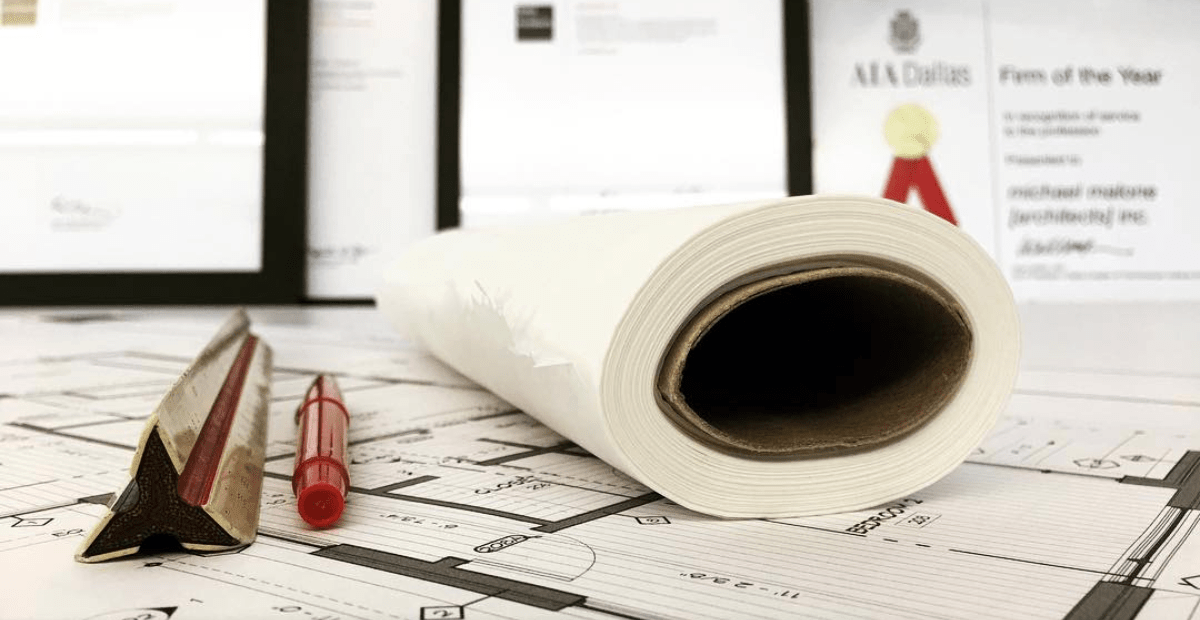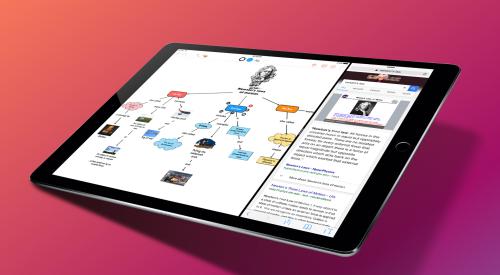So you’ve graduated from architecture school and received a university degree in architecture—so what happens next? What exactly does an architect do? What if you don’t want to be a designer, maybe you have interests in how buildings are detailed and built, the selection of materials and finishes, firm management... so many directions you could go. Today we are going to talk about a bunch of them and take you Inside the Firm!
No matter the size of the architectural firm, almost all of them have a similar set of roles to be filled in order to run the firm and make it successful. These roles can be multiple people in a large firm but as the firm size decreases, the number of roles taken on by a single person most likely increases. I’ve talked many times about the multiple hats worn by those of us in the profession who work in small firms, and until recently, this is the only environment I’ve known for the majority of my entire career.
Considering that this is the 944th post I have personally written on this site, it’s a little shocking to learn that this is really the first time that I’ve really dived into the various roles someone can pursue within an architectural office. So, armed with that knowledge, let’s get into the roles and discuss how there is a place for all types of people within the architectural profession.

We should point out – or maybe have a small primer conversation that not all of these roles are available at every firm but based on your interests, it is a consideration that might point you towards a particular-sized firm. In no particular order – well that’s not true, we’ve tried to group roles together that might make sense or share some path of growth and development, I suppose I am trying to stay away from implying there is any hierarchy to these roles.
Production Manager / Production Staff [5:20 mark] – the backbone of any architectural firm. Everyone in this area is focused on the creation and coordination of the main deliverable of the firm . . . the construction documents. This is also the department of the firm that makes up the largest percentage of staff and effort. Typically this area is where most new graduates start their careers.
Construction Administration [11:00 mark] – There is actually an entire department within this category. All the work in this department is concentrated on the execution of the products created by the production department. The effort of making sure that the project is built according to the construction documents by reviewing submittals, visiting the job site, and overall involvement in the process of construction.
Specification Writer [14:12 mark] – Until I came to my current office, I’ve never had a dedicated specification writer. I have either written and assembled all the specifications or we hired a third-party to handle it for us, which for the record, never worked out very well. Reviews drawings and other project information to write and edit project specifications. Uses a thorough understanding of project design requirements to translate project needs for specific materials, equipment, installation, certifications, testing, and methods applicable to the project. Performs product research, assists in material selection, develops and maintains relationships with vendors, performs quality management reviews, and provides technical advice to project teams.
Business Development [17:25 mark] – While this doesn’t have to necessarily be an architect, I think it helps. To a certain extent, all the people in leadership positions do business development just be doing good work and making clients happy.
Business development is about making connections. It’s building upon the brand that you have established through marketing efforts to connect your audience to your products and services. It’s prospecting (think networking events), qualifying leads and then converting those leads into clients. Business development is all about creating relationships.
Marketing [19:40 mark] – the idea of marketing in my past working life was pretty much non-existent. You did things in the community, you volunteered for roles in professional organizations, sat on boards, etc. In my new office, the marketing efforts are tackled by 4 full-time people who write proposals, coordinate the firms message and how it’s delivered, and help business development efforts to work efficiently.
Marketing is also about identifying your key differentiators, developing your message and establishing a positioning within your market(s). Think advertising, event promotion, website content and building thought leadership through public relations – these are all marketing strategies.
Designer [27:56 mark] – my perception of the title “Designer” is that this is the role that most people who finish architectural school want to be … or was that just the school I graduated from? Designers do exactly what you think they would do – they are responsible for all, or some part, of the design process that results in how a building appears and functions.
Technical Designer [30:34 mark] – building envelope design, expertise in detailing (we have such a role in our interiors department who creates details all day long and is a repository of knowledge). The technical intricacies of the built environment are at the core of this position. Working through the manner in which a project is put together and detailed is an integral part of all firms.

Graphic Designer [32:00 mark] – while this might not normally be the first thing that comes to mind when you are thinking “architectural graduate” … it’s a thing. I’ve actually had this role in two different jobs. Many larger firms have a separate department that is solely dedicated to graphic design. It does a wide variety of work that is often independent of the architectural part of the firm.
Digital Practice Lead [33:21 mark] – I have to admit that this is a new thing to me but it is a thing. We have a mutual friend – Evan Troxel, international man of all things amazing, and that’s also true, I’m not pandering here. So I emailed him a few days ago to send me the description of his role, which is actually titled “Director of Digital Practice” and in true Evan fashion, he over delivered. He sent me enough information that I think I am now prepared to open my own Digital Practice Consulting Firm.
Here is the Cliff Notes version … He is basically responsible for integrating design technology, BIM technology, Regenerative Design, Visualization and VR groups, develop and incorporate data collection and query for purposes of design intelligence, automation, simulation and downstream exploration for artificial intelligence.
Rendering [36:40 mark] – Some people love this stuff so hard that they exist in the 5th dimension. This position is dedicated to the creation of the presentation level graphics for the firm. They could be considered the technical “artists” of the firm. The time spent here is all about creating a visual world that brings the firm’s projects to life. Mastery of multiple software applications would be a required skill set.

Project Manager [39:20 mark] – Responsible for coordination of all project efforts, administrative and technical, to ensure the most efficient and cost-effective execution of assigned projects. Prepares strategic plans for project success. Serves as primary liaison contact with clients to complete projects on schedule, within budget, and with maximum client satisfaction. Actively manages client budgets, schedules, and programs; budget and schedule; project communications and documentation; office administrative tasks; and project team assignments. Estimates fees, determines the scope of work and prepares proposals and contracts on the most complex projects. Provides oversight and monitoring of the work of less experienced project managers.
Project Architect [40:22 mark] – present directly to the client on technical and design solutions. Works closely with the Project Manager to execute project plans. Coordinates with the Project Manager to directly supervise the teams’ design and technical delivery.
Principal /Partner [42:12 mark] – Responsible for establishing overall goals and objectives and coordinating implementation plans. In conjunction with other senior leaders, is responsible for the realization of profits compatible with the interests of clients and the firm. Develops and promotes the firm’s vision, mission, core values, and long-range plans. Oversees and controls operations and activities to promote the achievement of the firm’s objectives. The Principal also implements policies established by the board. Participates in creating and positioning the firm to take advantage of opportunities for growth and marketplace expansion. Ensures profitability, quality enhancement, and professional development.
This particular question has been on the “hypothetical questions” list for about the last 6 months, but I keep skipping over it – not because I don’t like it, but because of where I think the conversation could go. This could get embarrassing for one of us, and by us, I mean me. [45:02 mark]
"If you could give yourself a nickname that everyone would have to use, what would it be?"
Did you have any nicknames growing up – particularly ones that you didn’t like? If you tell us the nickname you do want, it seems reasonable to talk about what nicknames you don’t want … and of course, those are the ones that everyone will start using. My Dad wanted everyone to call him “Duke” but he said it didn’t stick – which makes me think you can’t choose your own nickname.

Clearly, there is a multitude of options for your career in architecture. I think the takeaway here is that even if you are not the world’s best designer or a superb artist, the field of architecture, construction and design has a position that could utilize your skill set as well as allow you to pursue your interests.
Cheers – and carry on.

Life of an Architect would like to thank BQE Software for their gracious support of this episode as well as our media partners, Building Design+Construction. Life of an Architect podcast listeners get 10% off an annual Core subscription when signing up today for a free trial. Just visit www.bqe.com/loaa to learn more about the complete firm management platform built for Architects.













